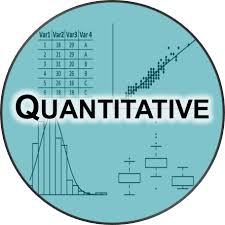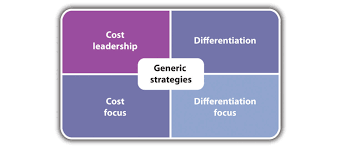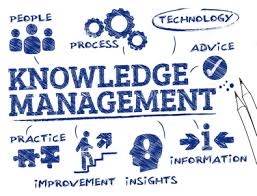
ANALYSIS OF RESEARCH DATA ;Analyzing Quantitative Data
Order Instructions:
ANALYSIS OF RESEARCH DATA
Analyzing Quantitative Data
Previously you discussed how data is collected. Now you will consider how the information gathered with data collected is analyzed.
How does the researcher go about organizing and looking at the data in order to understand what it means? In quantitative research this is accomplished through the use of statistics.
The methods for data analysis depend on the purpose and data collection methods. Most all studies will have descriptive statistics. These statistics describe the sample that was studied. They include data like the percent of men and women, the mean age of the sample, and any other demographic data collected.
The two other most common methods of data analysis are the paired t-test, which measures the differences in means between two groups, or the same group with a pretest and posttest; and the Pearson’s r which measures the relationships between two variables. Pearson’s r can also be used to identify relationships between demographic data and other variables.
Activities
REQUIRED ACTIVITIES
From your textbooks, read:
Introduction to Nursing Research Incorporating Evidence-Based Practice
• Chapter 12
• Chapter 13
Please look up and read the following articles before completing the critique of this paper
• Coughlan, M., Cronin, P., & Ryan, F. (2007). Step-by-step guide to critiquing research. Part 1: quantitative research. British Journal Of Nursin, (BJN), 16(11), 658–663.
• Giuliano, K., & Polanowicz, M. (2008). Interpretation and use of statistics in nursing research. AACN Advanced Critical Care, 19(2),211–222
• Ingham-Broomfield, R. (2008). A nurses’ guide to the critical reading of research. Australian Journal Of Advanced Nursing, 26(1), 102-109.
Please review the following websites.
Please visit the following sites to understand statistics and nursing research:
• Basic Statistical Concepts for Nurses. Retrieved from
http://www.nursingplanet.com/-Nursing_Research/basic_statistical-_concepts_nurses2.html
• Statistics for Nurses. Retrieved from
http://www-users.york.ac.uk/~mb55/msc/nurse/nurse.htm
NB
You are to answer in the template provided,
SAMPLE ANSWER
Analyzing Quantitative Data
Full and Complete Reference for the Article:
KuKanich, K. S., Kaur, R., Freeman, L., & Powell, D. A. (2013). Evaluation of a Hand Hygiene Campaign in Outpatient Health Care Clinics. AJNonline; 113(3).
Problem:
What is the problem the study was conducted to research?
Many research studies conducted earlier have tested the interventions for improving hand hygiene within teaching hospitals and clinics and the interventions were found to be successful. Nonetheless, moderately few research studies have actually tested such interventions within outpatient hospitals and clinics.
Why is the problem an important one for nursing to research?
The problem is an important for nursing to research primarily because it will help to improve adherence to hand hygiene practices of health care workers in outpatient settings.
Study Purpose
What is the purpose of the study?
The purpose of the research study is essentially to improve hand hygiene in 2 outpatient healthcare clinics by introducing an informational posters as well as a gel sanitizer (Kukanich et al., 2013).
Research Question
What is the main research question?
The researchers formulated 5 main/primary questions that were to be addressed in the study. These include the following:
- Could an intervention campaign carried out in 2 outpatient healthcare clinics result in improved hand hygiene?
- Are there any dissimilarities in the observed frequency of hand hygiene at baseline compared with that at 1 week and 1 month after introducing the intervention?
- Are there any dissimilarities in the observed frequency of hand hygiene basing on the gender, profession, and timing (post-patient and pre-patient contact) of the worker?
- Which tools of hand hygiene do healthcare staffs in these settings – outpatient settings – prefer?
- Would the observed healthcare staffs later on report that both or either intervention tools were actually motivating and indeed influenced habits of hand hygiene?
Hypothesis/hypotheses
What is the study hypothesis? If it is not stated, what would you say the hypothesis is?
Interventional campaigns in the 2 outpatient health care clinics will lead to improved hand hygiene. The use of a multifaceted implementation approach that consists of a gel sanitizer and giving informational posters helps in achieving significant improvement in adherence to HH practices and practices within outpatient clinics.
Study Variables
INDEPENDENT
Define the meaning of the term “independent variable.”
Independent variables (IV) are those variables which are manipulated or varied by the researcher during the investigation. In essence, the IV is the presumed cause, it is the antecedent. In experiments, the IV is the one which is manipulated and controlled by the person doing the experiment. In non-experiment research in which there is no experimental manipulation, the IV is basically the variable that logically has some effect on the Dependent Variable (Hoe & Hoare, 2012).
Identify the independent variables in this study and provide a definition of the variable.
It is notable that 2 outpatient health care clinics were used in this research study. The 1st clinic was an outpatient oncology clinic, and the 2nd clinic was an outpatient gastrointestinal (GI) clinic. The IV in this study basically comprised the introduction of an informational poster and a gel sanitizer as an intervention.
How is the independent variable carried out in this study?
Gel sanitizer was included in this study in order to provide HCWs with an alternative to foam sanitizer and water and soap. The researcher’s created an informational poster in order to increase HCW’s awareness of HH, offer information regarding when HH has to be done, and encourage HCWs to take personal responsibility for decreasing the spread of infections which are associated with health care (Kukanich et al., 2013).
DEPENDENT
Define the meaning of the term “dependent variable.”
A Dependent Variable (DV) is understood as the response which is measured in an experiment. The DV is the presumed effect, it is the consequent. The Dependent Variable is not manipulated by the investigator, rather, it is the Dependent Variable which is measured or observed for variation as a presumed, supposed outcome of the variation in the Independent Variable (Venkatesh, Brown & Bala, 2013). The Dependent Variable is essentially the status of the outcome or the effect in which the investigator is interested. In essence, the DV is the variable that the researcher observes and is likely to change in response to the IV.
Identify the dependent variables in this study and provide a definition of the variable.
In this study, the DV is the adherence of health care workers – doctors, nurses, and other workers in the hospital setting – to hand hygiene practices and guidelines.
How is the dependent variable measured in this study?
The DV variable was measured by directly observing HCWs to measure HH opportunities as well as attempts at baseline, after the intervention, and in the course of the follow-up period. Direct observation by trained observers is essential in providing more precise, exact information as regards the preferences of a health care worker for hand hygiene tools. The investigators measured the number of HH attempts against the number of HH opportunities. The opportunities were monitored by direct observers who recorded the attempts. HH opportunities were defined as the opportunities which occurred instantaneously prior to, and after a HCW directly contacts a patient. HH attempts are efforts to do HH in each opportunity (Kukanich et al., 2013).
Conceptual Model/Theoretical FRAMEWORK –
Is the framework explicitly expressed or must the reviewer extract the framework from implicit statements in the literature review? JUSTIFY your response!
In this research study, the conceptual model/theoretical framework is not explicitly expressed. The reviewer has to extract the framework from implicit statements in the literature review. This is because it is not overtly or clearly stated by the authors anywhere in the article and to know it; the reviewer must read through the statements contained in the literature review.
Is the framework based on scientific, substantive, or tentative theory?
The theoretical framework in the article is based on tentative theory; the researchers built tentative theory basing on certain propositions.
Does the framework identify, define, and describe relationships among the concepts of interest? Provide examples and rationale for your response.
Yes, the framework identifies, defines and describes relationships amongst the concepts of interest. For instance, the researchers have pointed out that an earlier hospital-wide study included the promotion of alcohol-based sanitizers, which led to increased usage of these hand sanitizers that resulted in improved adherence to HH guidelines. Simply put, there was a relationship between the promotion of alcohol-based sanitizers and improved adherence to HH guidelines; the more it was promoted, the more the HCWs in that hospital used it. Another example is the relationship between alcohol-based sanitizers, soap and water, and bacteria. When properly used, studied have demonstrated that alcohol-based sanitizers are more effective in removing some bacteria relative to water and soap (Kukanich et al., 2013).
How is the framework related to the body of knowledge in nursing?
The framework is related to the body of knowledge of nursing in that it helps in understanding how exposure of HCWs in busy outpatient healthcare settings to interventional tools could result in improvement of adherence to HH guidelines. It also helps to understand how gel sanitizers or informational posters help to improve adherence.
Review of the Related Literature
Are the articles relevant with previous studies and theories described?
Yes, the articles are relevant with previous studies and theories described. This because the articles are largely about adherence of HCWs to HH guidelines, which are in line with the previous theories and studies described which are also about the same thing – adherence of HCWs to guidelines of hand hygiene.
Are the references current? Identify the number of sources within past 10 years and the number of sources within past five years.
A total of 28 references were used by the researchers in this study. Most of them are relevant since out of the 28, 18 of them are from past the 10 years – dated 2004 up to present year –, and 5 are from the last 5 years – 2009 up to present year.
Describe the current knowledge about the research problem.
The practice of hand hygiene (HH) by healthcare workers (HCWs) including nurses and physicians using either water and soap or an alcohol-based hand sanitizer, is regarded as the most effective and significant method utilized to prevent healthcare-associated infections. Earlier studies have clearly shown that hand hygiene helps to reduce the rates of healthcare-related infections, adhering to the guidelines of hand hygiene is low amongst HCWs. In order to improve the adherence to HH guidelines and sustain such improvement in the long-term, it is important to recognize and address barriers. The main barriers basically include: a perception that HH interferes with patient-worker relationships; skin irritation; poor habits that were learned early in life; time constraints; poor access to HH materials; time constraints; forgetfulness; as well as lack of knowledge of HH guidelines (Huis et al., 2013).
Cleaning hands using an alcohol-based sanitizer usually takes less amount of time compared with washing with the use of water and soap. In addition, when utilized properly, it has been demonstrated that alcohol-based sanitizers are more effective compared to water and soap in eliminating some bacteria. It is on account of this that the World Health Organization (WHO) and the Centers for Disease Control and Prevention (CDC) actually recommend the utilization of alcohol-based sanitizers or hand rubs for clinical healthcare contexts. Nonetheless, washing hands using water and soap is still the favored way when hands are noticeably dirty. It is also the preferred method whenever one suspects contact with some infectious agents, for instance norovirus and Clostridium agents, considering that these organisms are very much resistant to killing with the use of alcohol (Boudjema et al., 2014).
Individual HCWs generally have dissimilar preferences of HH products and they can be affected to some extent by dissimilar barriers and motivators to HH. Santos (2013) noted that it has been shown by earlier studies that the use of more than one method is necessary in order to attain improved HH practices and sustain them over the long-term. In essence, such campaigns typically comprise the promotion of alcohol-based hand sanitizers. Even though evidence is lacking showing that educational materials alone for instance posters are actually effective at altering behavior of HCWs to adhere to HH guidelines, those which employ messages framed in terms of possible gains instead of losses and which entreat the HCW’s sense of responsibility for the health of the patient might be of benefit in combination with other vital strategies.
Specify the gap in the literature that justifies the need for the research.
There is little or very limited knowledge about the adherence of HCWs in busy outpatient settings to hand hygiene guidelines. There is also gap in knowledge regarding the effectiveness of using gel sanitizers and informational posters in the overall HH performance of HCWs within outpatient clinics. This study was aimed at addressing this gap in existing knowledge.
Many research studies have tested interventions that can be applied to improve HH in teaching hospitals and it was found that they were actually successful. Nonetheless, fairly few studies have tested these sorts of intervention within outpatient clinics. Mensah (2005) in their study which they carried out in outpatient clinics in Britain observed that baseline HH adherence was 18 percent. In a different research study carried out in an outpatient clinic in Israel, Cohen (2002) observed the behavior of doctors and sampled their hands for bacteria, although there was no intervention that was introduced. Observance to HH was low at just 31 percent. It was also observed that 69 percent of the doctors had Stapholococcus aureus in their hands. Some of the reasons that doctors cite for not adhering to HH guidelines include the absence of hygiene facilities, lack of awareness, too much workloads, as well as negative reactions to disinfectants (KuKanich et al., 2013).
Study METHODOLOGY
NAME the specific quantitative methodology of the study.
Observation is the specific quantitative methodology that was applied by the researchers. At times one cannot control a situation, and conducting an experiment is typically not feasible. Nonetheless, it might be probable to observe what goes on.
Provide a clear description/definition of this methodology (in your own words); use an article or your text to support the definition and provide a citation.
Quantitative observation is basically an observation that could be measured in numbers for instance length, volume, and acceleration. In essence, quantitative observations are usually made using instruments (Lubbe & Roets, 2014). They are observations observed of data in numbers; objects are counted or measured and are commonly with numbers.
Why was the choice of this methodology appropriate for this study? JUSTIFY your response.
The choice of observation quantitative methodology is appropriate for this study since the researchers has to collect data through observations. They needed to observe the subjects/participants in order to monitor the HH opportunities and to record the HH attempts of the HCWs in the 2 clinics.
Sample and Setting
Identify inclusion and exclusion sample criteria.
The inclusion criteria included the following: (i) the participant had to be a health care worker; (ii) the participant had to be working at either GI clinic or at the oncology clinic; (iii) the subject had to be a nurse or a physician; and (iv) the subject has to be aware of hand hygiene practices. The exclusion criteria: (i) the individual not being a health worker; (ii) the participant not working at either GI clinic or at the oncology clinic; (iii) the individual not being either a nurse or a physician.
Indicate the method used to obtain the sample. Provide a definition of the method and discuss why it was an appropriate choice for this study
The sampling method utilized by the researchers in this study is purposive sampling. Purposive sampling is essentially a sampling method in which the researcher samples with a purpose in mind. The researcher would typically have 1 or more precise groups that he/she is seeking. Purposive sampling is essentially a kind of non-probability sampling wherein some elements of population do not have any chance of selection, or in which the probability of selection cannot be established accurately (Yarcheski & Mahon, 2013).
Purposive sampling method was appropriate in this research study since the researchers started with a purpose in mind; they wanted a certain predefined group – health care workers in busy outpatient clinics. As such, they only had to sample individuals who are health care workers working in outpatient clinics.
State the sample size. Indicate if a power analysis was conducted to determine the sample size.
This study included a sample size of 88 participants: 41 HCWs at the GI clinic and 47 HCWs at the oncology clinic. Power analysis was not performed to determine the size of the sample.
Identify the SPECIFIC characteristics (demographics) of the sample.
The demographic in this study is defined in terms of gender. Survey was conducted in which 56 HCWs were sent questionnaire survey: 15 from the GI clinic and 41 from the oncology clinic. Of the 56 respondents, 30 were females while 26 were male.
Identify the sample mortality (or attrition) number and percentage.
Sample attrition or mortality is understood as the number of individuals who drop out of the research study in the course of the study. Initially, 88 health care workers were mailed questionnaire survey and only 56 of them returned the survey. As such, the attrition is 32. This is equal to 36.36%.
Indicate the type of consent obtained and institutional review board approval.
Getting consent for the participation of participants in any research study is of major importance. The main types of consent include proxy, post-hoc, implied/implicit, and explicit/express/informed. Implied/implicit consent was obtained from the participants of this research study given that the consent was not obtained through formal ways, for instance verbal or written approval (Schneider, Nicholas & Kurrus, 2013). The participants completed questionnaire forms and this implied their consent to take part. Approval was obtained from the administration of the two clinics.
Identify the study setting and indicate if it is appropriate for the study purpose. JUSTIFY your response!
The research study was conducted in 2 outpatient clinics. This setting is appropriate for the purpose of the study since the researchers wanted to improve HH in the 2 outpatient health care clinics by way of introducing an informational poster and a gel sanitizer.
Identification and Control of Extraneous Variables
Define extraneous variables
Extraneous variables are basically understood as undesirable and unwanted variables which influence the relationship between the variables being examined by the investigator. Extraneous variables influence an experiment’s results, although they are not the variables of interest (Hoe & Hoare, 2012).
What are the extraneous variables in this study? In what way(s) were appropriate measures used to control for the influence of the extraneous variables? Describe fully. If not addressed, explain how you know this and identify the extraneous variables you would note.
In this research study, the extraneous variables include gender, age, background and mood of the participant. It is notable that during the research study, female HCWs were more consistent in HH compared to male HCWs. The influence of extraneous variables was controlled by using almost the same number of male and female participants in the study, and ensuring that they all have the almost the same background regarding knowledge of hand hygiene practices.
Study Instruments/Tools
Identify the instruments used in the research
Survey was the instrument used.
FOR EACH INSTRUMENT: Instrument #1; Name of Instrument: Discuss how the instrument was developed or purpose of use. Cite the source for the background information about the instrument.
Survey was the instrument utilized by the researchers. A survey was mailed by the researchers to the nurse managers at the 2 clinics, and was circulated to 41 HCWs at the GI clinic and to 47 HCWs at the oncology clinic, 3 months following the final day of the follow-up observations. The researchers carried out the survey in order to evaluate the HCWs’ opinions of HH at their respective clinics, as well as their preferred tools of HH – gel sanitizer, foam sanitizer, or water and soap (Kukanich et al., 2013). Surveys are a descriptive, non-experimental method of research and they are particularly valuable whenever the investigator wants to gather data on phenomenon which cannot be observed directly, for instance opinions and perspectives of participants (Hoe & Hoare, 2012).
Identify the type of measurement strategy (e.g., Likert scale, visual analog scale, physiological Measure, questionnaire, observation, or interview).
Questionnaire, observation and Likert scale were used. Observation was measurement strategy applied. Interventional observation was used as the participants were directly observed to monitor HH opportunities and record HH attempts. Questionnaire was used after the observation. A 5-item Likert scale that ranged from strongly agree to strongly disagree was utilized for questions about the motivational effectiveness of each of the intervention tools.
Identify the level of measurement (nominal, ordinal, interval/ratio) achieved by the measurement strategy. Provide a definition of the level of measurement(s) you identified and justify WHY you believe the instruments represent this level of measurement.
The measurement strategy achieved ratio. In ratio measurement, a meaningful absolute zero is always there. This implies that the researcher can construct a meaningful ratio using a ratio variable (Yarcheski & Mahon, 2013). The instruments represent ratio level of measurement because in the survey conducted in this study, there could be zero HCWs who believe that HH campaign has improved their HH practices.
Report the reliability of the instrument from previous studies and the current study.
He instrument is consistent. The information collected by the survey is consistent.
Report the validity of the instrument from previous studies and the current study.
The instrument is accurate and it serves the function that it was intended to serve, and always gives information that is correct.
Data Collection Methods
Detail how the data were collected.
Data were collected through observation and the use of survey. Through observation, the investigators observed the subjects/participants in order to monitor the HH opportunities and to record the HH attempts of the HCWs in the 2 clinics. One month following the final day of interventional observations, the researchers conducted follow-up direct observations of HH on 3 non-consecutive days. Survey was carried out to evaluate the HCWs’ opinions of HH at their respective clinics, as well as their preferred tools of HH – gel sanitizer, foam sanitizer, or water and soap
In what way(s) is the data collection procedures appropriate for this study?
Observation is appropriate since they needed to observe the subjects/participants in order to monitor the HH opportunities and to record the HH attempts of the HCWs in the 2 clinics. Survey is appropriate since it was useful in assessing the HCWs’ sentiments of HH at their respective clinics, as well as their preferred tools of HH.
In what way were appropriate steps taken to protect the rights of the subjects?
The subjects were respected and treated as autonomous agents and those who wanted to drop out were allowed to do so. In essence, there right to end participation in the research study at any time was respected. They were also given access to information as regards the research study.
Statistical Analysis Procedures
Identify the statistical procedures used in the study: Statistical Procedure #1 (Name and definition):
Chi-square: Pearson’s x2 was used. Pearson’s chi-squared is essentially a statistical test which is used in sets of categorical data in evaluating how probable it is that any observed dissimilarity between the sets came about by chance (Yarcheski & Mahon, 2013). In essence, it is utilized in determining whether there is any sort of relationship between 2 categorical variables.
Pearson’s Chi-square is the only statistical procedure that was used.
How was it used in the study?
Pearson’s x2 analyses were utilized in comparing the frequency of HH attempts throughout the 3 observation periods and in comparing the post-contact and pre-contact frequency of such attempts. It is notable that every calculation had 1 degree of freedom, and a P value equal to or less than 0.05, that is, <= 0.05, was seen as significant (Kukanich et al., 2013). Only descriptive statistics were utilized in assessing the frequency of HH by HCW’s profession and gender considering that there were considerably less observations of male HCW’s to allow comparative analyses. In addition, descriptive statistics were utilized to compare the HH tools utilized, given that product availability did vary in the course of the study.
Complete the table below with the analysis techniques conducted in the study:
| Statistical Procedure | Statistical Findings | Significance (provide a narrative description of the significance as well as the actual statistical values |
| Chi-square | Before intervention: Rate of attempt at GI clinic = 21%
Rate of attempt at oncology clinic = 11% After intervention: Rate of attempt at GI clinic = 54% Rate of attempt at oncology clinic = 36%
|
In both the GI and oncology clinics, the overall rates of HH attempts to HH opportunities were 21% and 11% respectively.
This improved greatly after the intervention was introduced to 54% and 36% respectively, and remained improved at the 1-month follow-up period 51% and 32% respectively. |
What are the specific results of the study? Provide DEPTH and write IN YOUR OWN WORDS.
In the GI clinic, at baseline, the overall rate of HH attempt to opportunities was 21%, it was 11% for the oncology clinic, and after the intervention, these improved substantially to 54% for the GI clinic and 36% for the oncology clinic. Half of those who were surveyed agreed or strongly agreed that the HH campaign had actually increased the awareness of HH. On the whole, 34 percent of the subjects agreed that HH campaign had improved their HH practices. Moreover, half of the participants agreed or strongly agreed that introducing gel hand sanitizer served as an effectual motivator and resulted in improved frequency of HH. HH performance was consistently better after contact with patient compared to before contact with patient.
Strengths\Limitations
What are two major strengths of the scientific merit of this study? (This does not refer to findings of the study)
- It was easier to answer the research questions using a small sample size than a large one
- The study was carried out on a new area which has not been examined previously thus it greatly contributes to the body of existing knowledge.
What are two major limitations of the scientific merit of this study?
- The possibility of the Hawthorne effect – some HCWs may have noticed that they are being observed, and hence they cleaned their hands more regularly.
- Only 56 subjects actually took part in this study which is a very small figure hence the findings cannot be generalized to the entire population of outpatient HCWs. It is difficult to generalize findings from a small size (Hackshaw, 2010).
How did the researcher generalize the findings?
The researchers generalized the findings by stating that the HH campaign demonstrated that providing informational posters and introducing a gel sanitizer could bring about short-term improvements in HH performance within outpatient clinics.
What did the researchers say the relevance of the data was? Describe the researchers’ interpretation of the findings.
They stated that the results of the research show that the HH frequency by HCWs in busy outpatient healthcare settings is low. They added that short-term exposure to interventional tools could result in modest improvement still seen at 1-month follow-up. Moreover, pre-testing interventions within a particular healthcare setting and utilizing a multi-faceted implementation approach may help in achieving the highest improvements. Reinforcing and/or establishing a clinic-wide expectation that HCWs would follow HH recommendations is also an important measure which might further encourage HH adherence.
Where in nursing can the results of the data be applied?
In busy outpatient settings
What suggestions for further study were identified?
The researchers recommend that in future, after the collection of baseline data, researchers should seek the ongoing involvement and support of influential HCWs who may also act as role models for other HCWs.
Is the description of the study sufficiently clear for replication? Explain and Justify your response
Yes, the description of the data is adequately clear for replication. This is because the instruments used were valid and reliable. They were accurate and measured what they were designed to measure.
REFLECTION
Reflect upon your newly developed understanding of quantitative research. What has this experience critiquing a quantitative research study meant to you and how will this make a difference in your overall practice of nursing? Please provide depth and be sure you respond to the question. This is a subjective response and must be at least 2 full paragraphs. Please respond in reference to understanding quantitative methodology and not the specific focus of the research study.
What has the experience of reading and critiquing a quantitative study meant to you?
It has meant much to me as it has helped to gain essential knowledge and skill that I can effectively utilize to conduct a useful quantitative research. It has helped me to identify the weaknesses such as small sample size that I need to avoid in order to ensure that the findings which I obtain can be generalized. It has also offered me a better, clear understanding of Chi-square/Pearson’s X2 and how I can use this statistical procedure in quantitative data analysis.
How will understanding and using quantitative research findings make a difference in your practice of nursing?
The understanding of using these quantitative research findings will make a difference in my practice of nursing in several ways. It will allow me to effectively apply the findings in my workplace, for instance by adhering to HH guidelines. Moreover, it will help me to focusing on doing what is right in order to improve outcomes.
References
Boudjema, S. S., Dufour, J. C., Aladro, A. S., Desquerres, I. I., & Brouqui, P. P. (2014). MediHandTrace®: a tool for measuring and understanding hand hygiene adherence. Clinical Microbiology & Infection, 20(1), 22-28. doi:10.1111/1469-0691.12471
Cohen, H. A .(2002). Handwashing patterns in two dermatology clinics. Dermatology;205(4):358-61.
Hackshaw, A. (2010). Small Studies: Strengths and Weaknesses. European Respiratory Journal; 32(5):1141-1143.
Hoe, J., & Hoare, Z. (2012). Understanding quantitative research: part 1. Nursing Standard, 27(15-17), 52-57.
Huis, A., Hulscher, M., Adang, E., Grol, R., van Achterberg, T., & Schoonhoven, L. (2013). Cost-effectiveness of a team and leaders-directed strategy to improve nurses’ adherence to hand hygiene guidelines: a cluster randomised trial. International Journal Of Nursing Studies, 50(4), 518-526. doi:10.1016/j.ijnurstu.2012.11.016
KuKanich, K. S., Kaur, R., Freeman, L., & Powell, D. A. (2013). Evaluation of a Hand Hygiene Campaign in Outpatient Health Care Clinics. AJNonline; 113(3).
Lubbe, J., & Roets, L. (2014). Nurses’ Scope of Practice and the Implication for Quality Nursing Care. Journal Of Nursing Scholarship, 46(1), 58-64. doi:10.1111/jnu.12058
Mensah E. (2005). Hand hygiene in routine glaucoma clinics. Br J Ophthalmol;89(11):1541-2.
Santos, L., Souza Dias, M., Borrasca, V., Cavassin, L., Deso di Lobo, R., Bozza Schwenck, R., & … Bierrenbach, A. (2013). Improving hand hygiene adherence in an endoscopy unit. Endoscopy, 45(6), 421-425. doi:10.1055/s-0032-1326284
Schneider, B., Nicholas, J., & Kurrus, J. E. (2013). Comparison of Methodologie Quality and Study/Report Characteristics Between Quantitative Clinical Nursing and Nursing Education Research Articles. Nursing Education Perspectives, 34(5), 292-297.
Yarcheski, A., & Mahon, N. E. (2013). Characteristics of Quantitative Nursing Research from 1990 to 2010. Journal Of Nursing Scholarship, 45(4), 405-411. doi:10.1111/jnu.12038
We can write this or a similar paper for you! Simply fill the order form!












